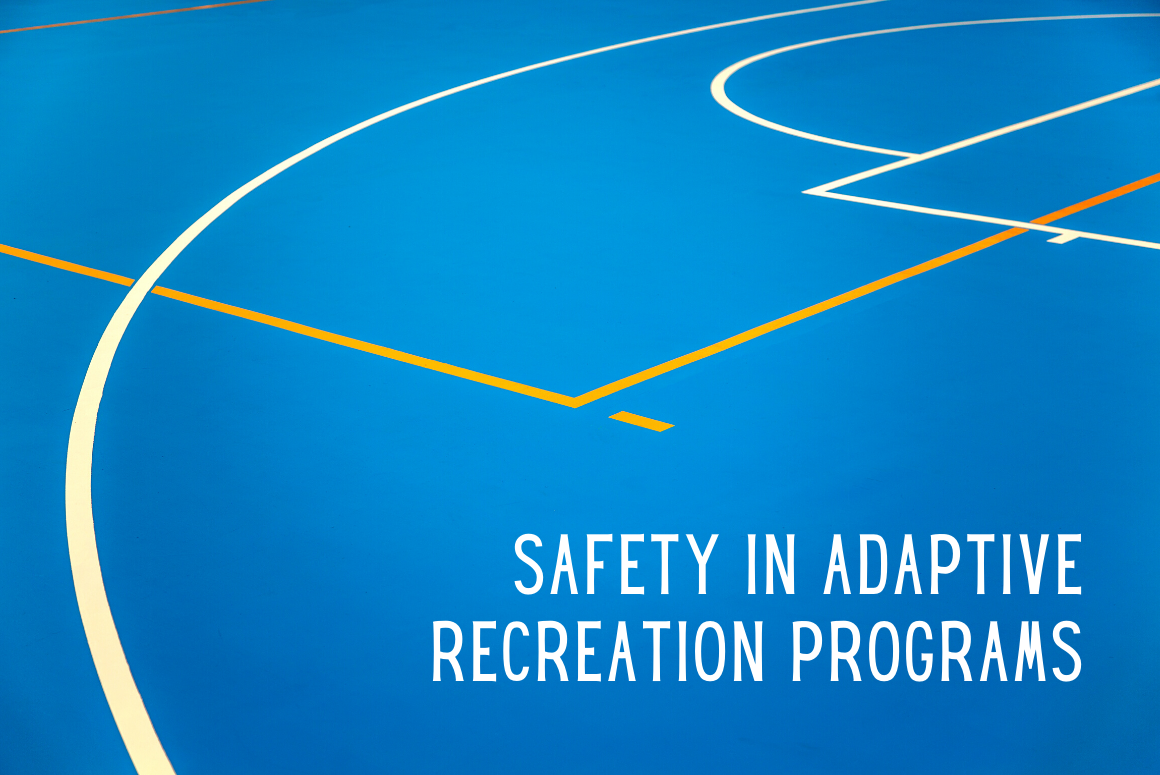Adaptive, or inclusive, recreation allows those with illnesses, disabilities, and other conditions to participate in recreational activities. Through the use of activity modifications, technology, and/or assistance, these programs can help everyone enjoy recreation safely and appropriately to enhance their health, functional abilities, independence, and way of life.
Whether your organization has dedicated Adaptive Recreation programming or incorporates it into regular recreation activities, it’s important to make sure your safety processes adjust to fit your participants’ particular needs. Here are a few things to consider!
Staff Training
Regardless of how your programs are adapted to suit every need, staff training is key to ensuring that they maintain your organization’s intention and mission to support those that need it. More than anything, staff need to be trained on inclusive practices – how to support those with a variety of needs, equipment (including technology) that can be used to facilitate programming, and how it fits into other program offerings like seasonal camps and after-school care. Training should also happen regularly, not just the first time a new staff member joins your team so that everyone stays up-to-date on information and learning.
Equipment and Spaces
When you include everyone in your programs, it’s important to ensure that everyone can physically access the spaces you use. Make sure that those with mobility difficulties can get to your programs, as well as those who might be visually- or hearing-impaired. Take the time to review your facilities regularly so that you can make ongoing adjustments to serve your participants best.
Depending on the program(s) you’re offering, give some thought to the equipment that you incorporate within them. Whether it’s a playground or an indoor gym, consider the “universal design” of your equipment, such as non-slip flooring, grab bars, and automatic doors.
Emergency Preparedness
Don’t forget to include the unique needs of your Adaptive Recreation members in your standard emergency preparedness planning. Consider all the ways that you can:
- Safely evacuate participants with mobility, visual, or hearing difficulties
- Support participants with behavioural conditions so that you can reduce uncertainty and fear for them
- Help visually- and hearing-impaired participants get to safety and understand what is happening around them if they can’t see or hear it
Additionally, your emergency kits and supplies should reflect these needs as well. Beyond your basic supplies, think about what your participants require on a daily basis and ensure that you have enough to last if you have to shelter in place or evacuate to another location.
Finally, a huge part of your emergency preparedness is your communications plan. Families trust their kids with you, knowing that they are safe while in your care, so extend this to your emergency plans as well. Have a way to inform parents when something happens, so that they know what to expect, where to pick up their child, or any other vital information.
Collect The Right Information
A lot of the support you provide your Adaptive Recreation participants is based on knowing their specific conditions and needs. While much of this might be static information (i.e. doesn’t change), some of it might adjust regularly (i.e. medication, treatments, symptoms) and it’s important for your staff to know this information as soon as it changes.
A tool like ePACT helps your organization collect specific participant information to prepare before a program starts and to help everyone participate safely as well. Families use their Private Personal Emergency Record (PPER)™ to store, share, and maintain information for staff – everything from diagnosed physical to mental, behavioural, and emotional conditions. They can make updates in real-time which ensures that authorized staff have everything they need as soon as it changes.
Terms and Conditions
All content provided on this blog is for informational purposes only. The owner of this blog makes no representations as to the accuracy or completeness of any information on this site or found by following any link on this site. The owner will not be liable for any errors or omissions in this information nor for the availability of this information. The owner will not be liable for any losses, injuries, or damages from the display or use of this information. This policy is subject to change at any time.

